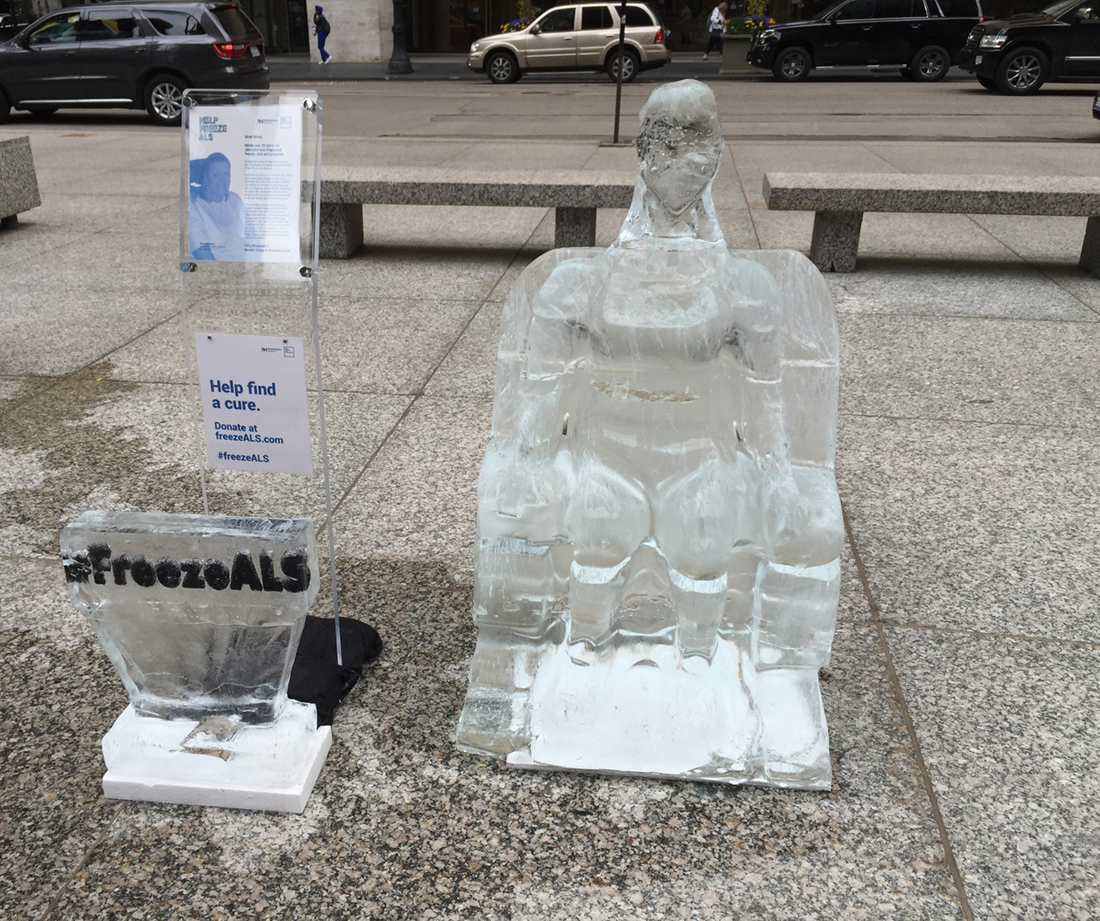By Anne Arntson
Jessica Holloway walked by Daley Plaza after finishing jury duty Tuesday afternoon.
She saw frozen shapes that looked like people and wanted to learn more.
That’s exactly what the Les Turner ALS Foundation wanted her to do, as they debuted seven ice sculptures as part of a three-day, 12-sculpture exhibit to bring awareness to the disease. Each sculpture was formed in the likeness of a person with ALS, also known as amyotrophic lateral sclerosis.
“You can’t take away the fact of the ice,” Holloway said. “It’s like your time is running out.”
One ice sculpture was debuted in front of Norris University Center at Northwestern University in Evanston on Thursday. Four more were displayed in front of the university’s medical campus in downtown Chicago on Friday.
“Last year, the Ice Bucket Challenge was an incredible awareness campaign for the entire worldwide ALS community, said Jordyn Landberg, marketing and communications manager for the Les Turner ALS Foundation. “We felt like, now that we finally have the attention of people, that it was a great opportunity to use the medium of ice yet again to draw attention to what the disease actually does to the human body.”
Related stories
ALS, also known as Lou Gehrig’s disease, affects a person’s nervous system. It weakens muscles, gradually claiming a person’s ability to move and speak. According to the Mayo Clinic, some early signs of ALS include slurred speech, muscle cramps and difficulty walking.
“While ice is a beautiful and haunting metaphor for the physically debilitating properties of the disease, the sculptures, based on actual patients, is meant to remind us of the human toll,” said Gabe Usadel, director of design at Ogilvy & Mather, which helped bring the sculptures to life.
ALS doesn’t discriminate, affecting men and women of all ages and races. According to the ALS Association, the disease is diagnosed in more than 5,500 people in the U.S. every year. The life expectancy of someone with ALS is two to five years from the date of diagnosis.
“It is amazing how many people are really only 2 or 3 degrees of separation removed from somebody with ALS,” said Andrea Pauls Backman, executive director of the Les Turner ALS Foundation, which serves more than 600 ALS patients in the Chicago area.
“ALS can happen to anybody. It can happen to any family,” Landberg said. “It can happen to any person…it’s not just baseball players, it’s not just football players. It’s your mom, your aunt, your sister, your mother.”
Ramin Chitsaz, who works downtown, wasn’t familiar with ALS before seeing the ice sculptures on Tuesday, but was drawn in by each of the sculpture’s stories. “It’s nice to help awareness about the cause,” he said.
Paul Launer, one of 12 ALS patients featured in the three-day exhibit, brought attention to ALS with help from his favorite team. The Blackhawks fan visited his sculpture on Tuesday wrapped in the team’s gear, and tweeted about the experience. The Blackhawks shared his tweet with their 862,000 followers.
#Blackhawks fan Paul joins his ice sculpture with his hockey stick, jersey and playoff beard! #freezeALS https://t.co/vn9eTv8aIj
— Chicago Blackhawks (@NHLBlackhawks) May 12, 2015
Pauls Backman said, “We were thrilled that he was there and thrilled that he helped us raised awareness.”

